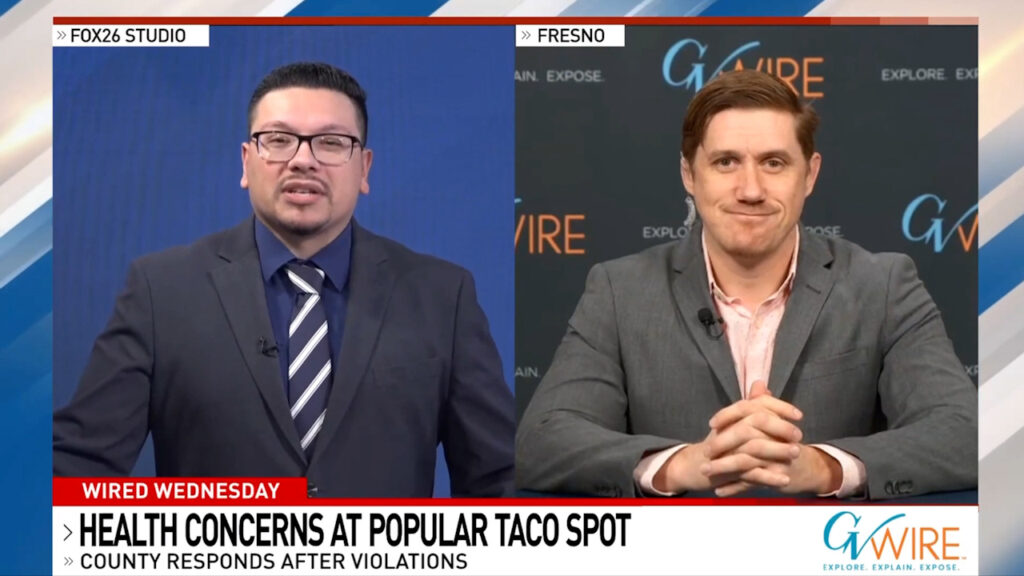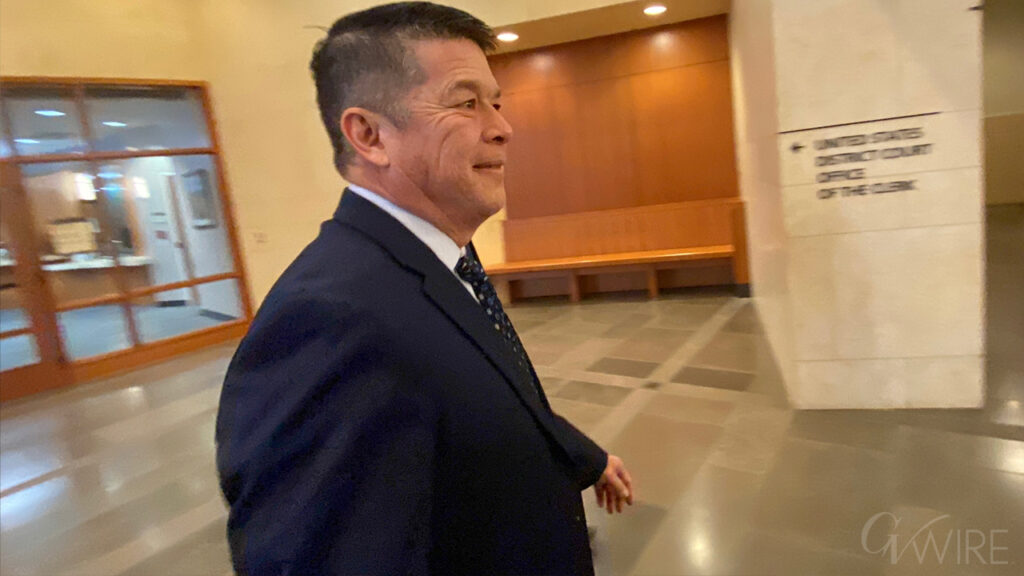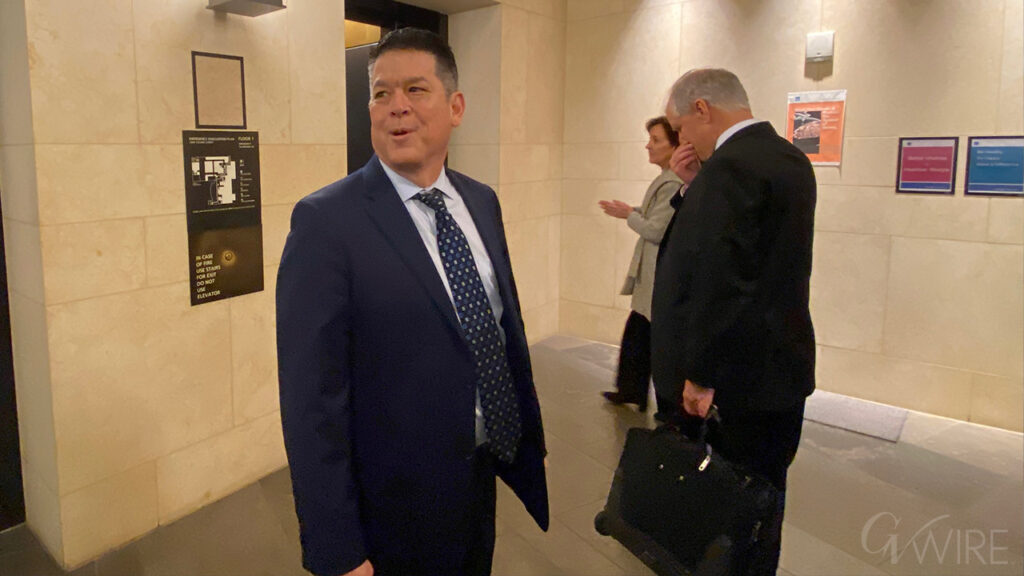Gov. Newsom promotes AI for state efficiency while taking shots at Trump, but California's tech track record raises doubts. (AP File)

- Newsom contrasts California's AI plan with Trump's DOGE, marking a shift in his political stance toward the president.
- Despite Newsom's tech optimism, California has a history of costly and troubled IT project implementations.
- A new state process for AI projects may reduce transparency, hindering oversight of cost and effectiveness.
Share
This commentary was originally published by CalMatters. Sign up for their newsletters.
Gov. Gavin Newsom staged a news conference in Los Angeles this week to tout the adoption of artificial intelligence to improve the efficiency of state government.
That’s pretty dull stuff, so Newsom goosed its news value by contrasting California’s AI program with President Donald Trump’s slashes of federal services via his Department of Government Efficiency, headed by Newsom’s erstwhile pal, industrialist and inventor Elon Musk.
“I could have easily come in here with sunglasses and chainsaws — you know where I’m going — and gotten your attention,” Newsom told reporters. “We’re DOGE but better.”
He took another potshot at Trump and Musk, saying, “They haven’t come close to the savings they’ve asserted. I think it’s been very damaging.”
Political Repositioning
Newsom’s remarks on Trump, Musk and DOGE represent his latest political repositioning, from a harsh critic after Trump recaptured the White House, to making nice with Trump as the state sought $40 billion in wildfire recovery grants, to entertaining prominent pro-Trump figures on his new podcast, and now to reclaiming the role of resistor-in-chief after taking heat from other Democrats for cozying up to Trump.
Newsom contrasting DOGE with California’s AI is not just a metaphoric stretch. Whether the latter will lead to an existential improvement in state government efficiency is open to question.
“GenAI is here,” Newsom said about generative AI, “and it’s growing in importance every day. We know that state government can be more efficient, and as the birthplace of tech it is only natural that California leads in this space. In the Golden State, we know that efficiency means more than cutting services to save a buck, but instead building and refining our state government to better serve all Californians.”
The state’s initial employment of the new technology will help improve highway congestion, traffic safety and services in the Department of Tax and Fee Administration, he said.
Will it?
The state’s sorry record of implementing information technology prior to the emergence of AI as a tool warrants skepticism.
Although Newsom wrote “Citizenville,” a book touting technology as a transformative factor in government, state tech projects have not fared well during his governorship, essentially continuing a record of failures and setbacks than began many years ago.
Concerns Over Implementation
There’s another aspect of Newsom’s new embrace of AI that’s also troubling because of the state’s spotty record on tech — a change in the way the state implements AI projects that could make it more difficult for legislators and the public to know whether they are working as promised.
Coincidentally or not, as Newsom was touting AI in Los Angeles, the Legislature’s budget analyst was issuing a report that raises red flags.
The topic is wonkish to the max, but basically the state is changing the way it approves certain types of technology projects.
It has been using a contracting and implementation process aimed at providing a whole picture of technology projects as funds are sought from the Legislature, but Newsom’s new process would do the projects in phases, and “Some information currently available … such as a project’s total baseline cost, schedule, and scope might not be as readily available (in the new system) while other information might be made confidential sooner during project planning,” the Legislative Analyst’s Office is telling the Legislature.
Implicitly the LAO report is warning the Legislature that a project’s shortcomings might not be known until it is too late to stop its adoption. “Therefore, to help the Legislature evaluate and understand the new process over a more reasonable time frame, we recommend the Legislature require reporting on completed project planning activities, and limit the new process to a small subset of projects (with additional reporting) over the next fiscal year.”
Complex though it may be, the change in implementation could result in even worse tech disasters than keeping the current process.
This article was originally published on CalMatters and was republished under the Creative Commons Attribution-NonCommercial-NoDerivatives license.
Make Your Voice Heard
GV Wire encourages vigorous debate from people and organizations on local, state, and national issues. Submit your op-ed to bmcewen@gvwire.com for consideration.
RELATED TOPICS:
Categories

Wrong-Way Driver Killed in Solo Highway 99 Crash in Merced

How Did DOGE Disrupt So Much While Saving So Little?


















